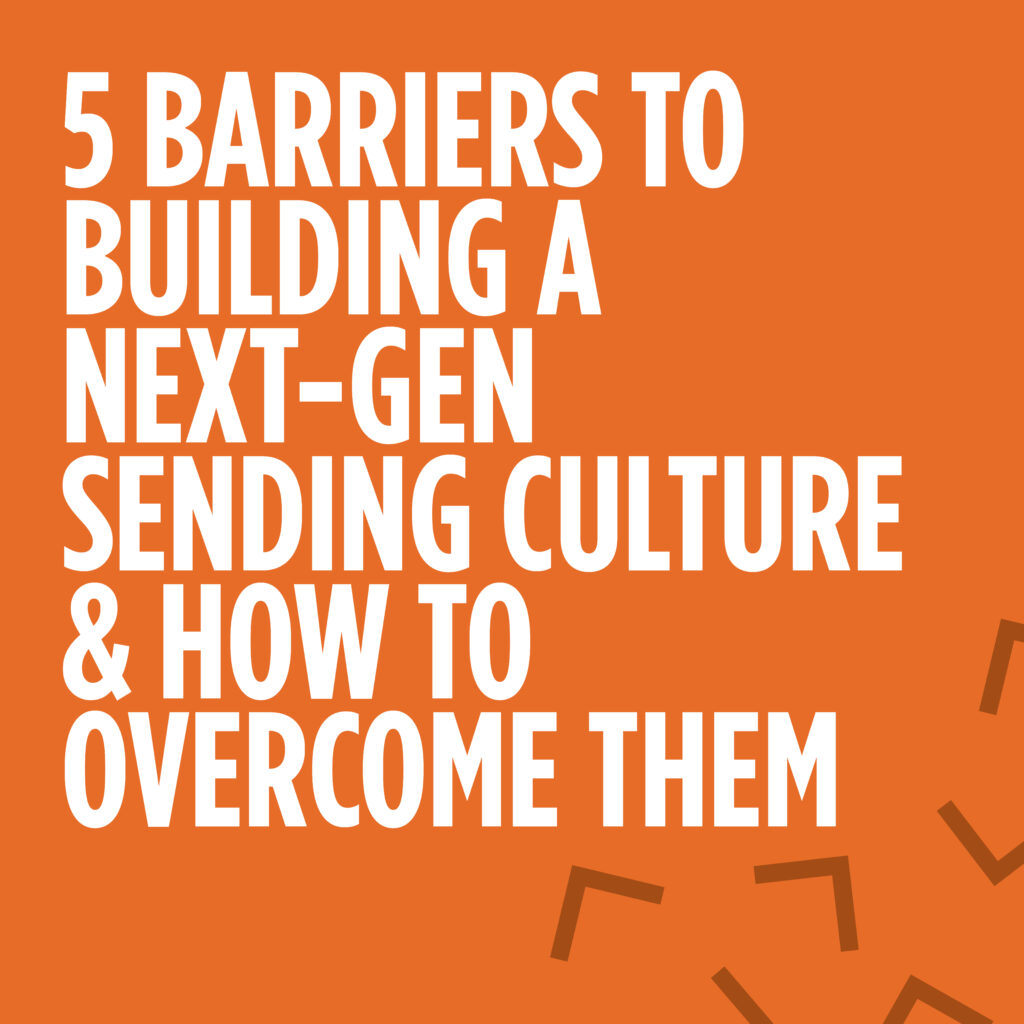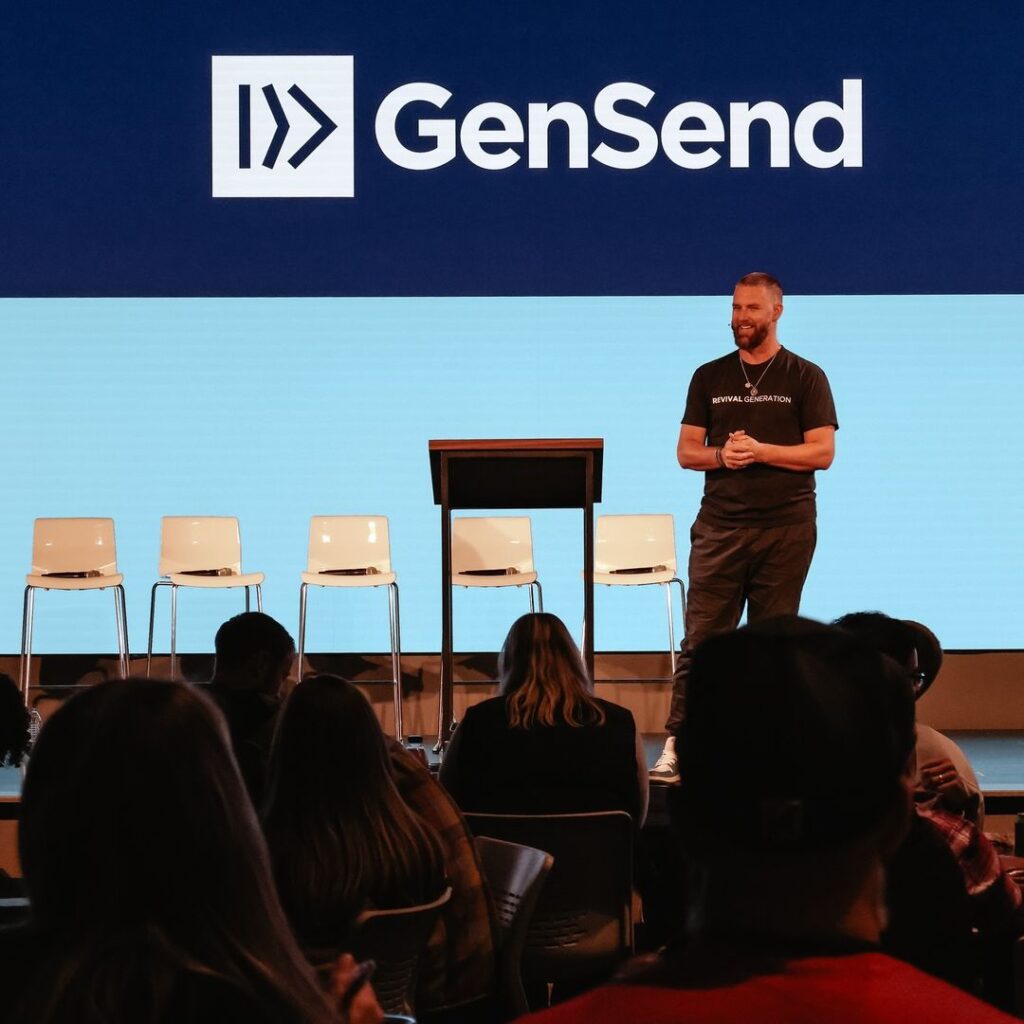Did you know that a little over half of the world’s population is below the age of 29? Fifty-two percent of the global population is considered young, and the most effective way of reaching them with the gospel is through another young person. God is using the next generation, our youth, to make His name great among the nations.
In my work leading NextGen Mobilization for the IMB, I’ve learned when it comes to the proclamation of the gospel that God will get the results He desires. But I’ve also learned there are barriers in youth groups, churches, and families that sometimes make it difficult for gospel work to move forward. As students have applied to serve overseas, we’re seeing five common barriers among applicants who were put on hold. God has granted college and youth leaders unique opportunities to influence the next generation. There is still time for these sending barriers to be overcome so that our youth can fearlessly and boldly take the gospel to the ends of the earth.
What are those g barriers to creating a next-gen sending culture, and how can we help our young people overcome them?
Barrier 1: Sexual Sin
Just because a young person is active in youth group and might even sense a call to missions doesn’t mean they’re immune to temptation. The plague of pornography and sex outside of marriage is hindering the spread of the gospel. Sexual sin is pervasive among our young people, and it is the top barrier we see in creating a sending culture among the next generation.
Barrier 2: Mental Health
Applying for and preparing for overseas missions can often reveal a host of mental health issues. Anxiety has become one of the leading challenges this generation faces, as well as addictions to various vices, including screens. YouTube, gaming, and social media contribute to these mental health challenges, and it has deterred the spread of the gospel by our young people.
Barrier 3: Financial Fears
When a student shares with his or her parents that he or she wants to serve on a mission trip, the initial response is usually that they can’t afford it. So, we’re seeing from parents not an actual lack of funds but the fear of not having enough. Along those same lines, it’s not that young people have a hard time raising funds; rather, it’s the fear of having to raise funds.
Barrier 4: Parents
Parents worry. It’s natural. But we’re seeing parents allow their fear to overwhelm their faith. Christian parents are holding their kids back. They’re afraid of what they may experience and are afraid to send them to hard places. They essentially tell their children they’re not ready for the mission field. More often than not, when someone halts the process of going overseas, it’s because of parents.
Barrier 5: Not Active in Evangelism
Many youths lack sharing their faith in their daily lives. Some will admit they are afraid to share the gospel. Others say they don’t want to share and that it’s not their role to convince another person that their beliefs are wrong and that they must believe another message. If they aren’t sharing the gospel where they are, it’s hard to imagine they’ll share among another culture. Transformation in evangelism efforts doesn’t happen by aviation. A plane ride can’t produce a heart for sharing the gospel.
These five barriers are real hindrances to bold, risky, next-gen missional living among the nations, but they can be overcome with these next steps.
Step 1: Overcome Misplaced Protections—Establish More Fitting Guardrails
One of the root causes of the five barriers is that many parents have trusted in misplaced protections. Could it be true that parents in the United States are focused on the wrong threats? They have focused on the physical safety of their children while neglecting their online protection. They have guarded their finances out of fear instead of trusting God with their resources and sending their kids out on the mission field in His safe hands.
As ministry leaders, we are responsible for having hard conversations with the young people we love about their internet use. God has a plan to strategically utilize them in the world for the gospel, but we must protect them from the right things, such as too-easily found online sexual temptations and anxiety-inducing apps. Faith-filled conversations and intentional actions of love can overcome these barriers.
Step 2: Replace Misdiagnosed Problems—Utilize God’s Word and His Church
Youths who struggle with mental health issues have found some help in counseling and other avenues of treatment. Still, I wonder how many of the struggles they face find their root cause in identity issues, foundational truths that the Bible speaks to—how the world defines them versus what the Word of God says about them. Let’s get these young people the help they need, but let’s start with the truth of God’s Word.
Next-gen students also need the local church. They need to know older people. They need models for how to live healthy, wise lives from church members of all ages. Let’s help our young people become more fully integrated into the life of the church and not compartmentalized into only being around people of their own age.
Step 3: Correct Misdirected Priorities—God’s Glory Above All
It’s easy to get sidetracked in the mission, so I want to encourage you to prioritize what God Himself prioritizes: His name exalted among every nation, tribe, people, and language. That’s what it’s all about—the glory of God among the nations. Does the actual, lived-out focus of your youth group and church reflect that same priority?
We go to great lengths to create vibrant discipleship groups, retreats, and camps, but how intentional has the Church been to train and deploy the next generation in evangelism and missions? How do we prepare our students to one day be fully equipped to speak of God’s glory among the nations? We must start somewhere. I suggest creating a pipeline, an intentional process that prepares them for missions.
If a student shows interest in becoming a missionary, you could:
- Read a book together about missions
- Share Christ among international populations once a month
- Pray consistently for unreached people groups
- Teach them the six components of the missionary task as found in Foundations
As the Church, we can overcome these five barriers and build a next-gen culture of sending. Pastors, youth leaders, parents—you hold the keys. I know God will use the next generation to make His name great among the nations. May we be faithful to help these students be fully equipped to fulfill the Great Commission for God’s glory.
Adapted from the Youth Leader Coaching Network. Learn more about our Youth Leader Coaching Network and sign up for the next cohort.
Published March 3, 2025



